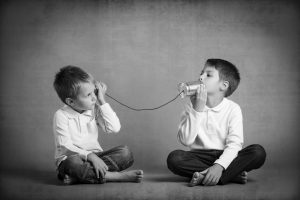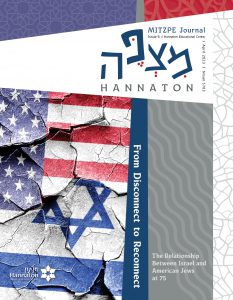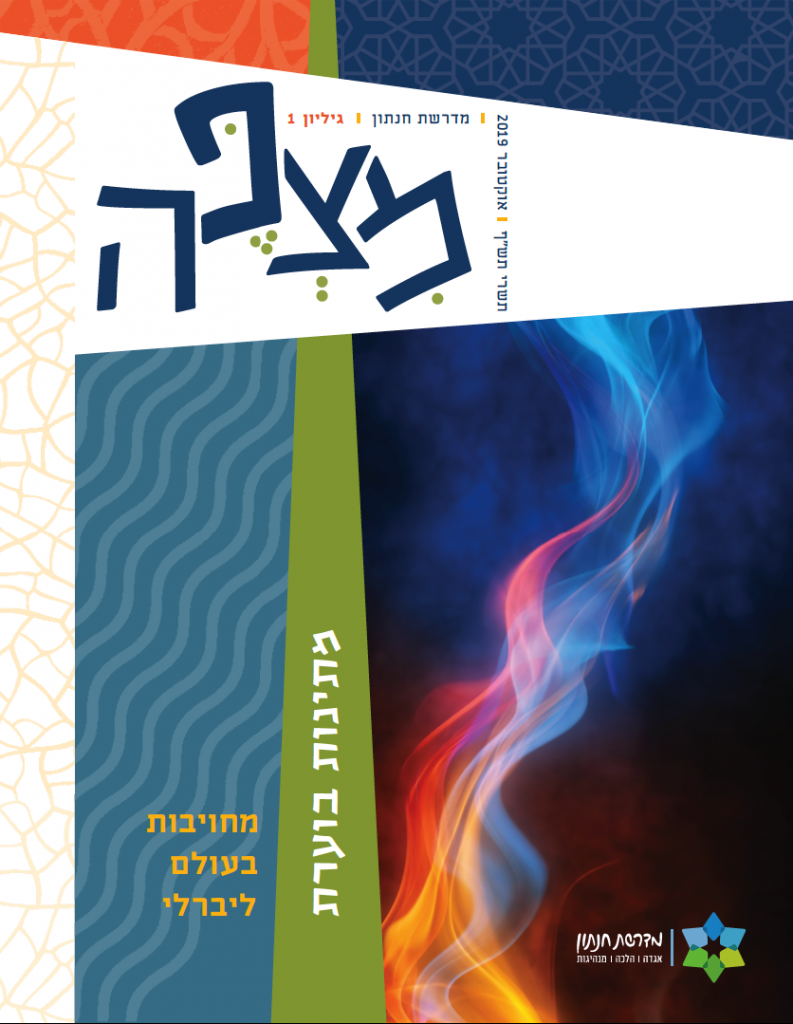Introduction: Toaster vs. Freezer
In one of his columns, Randall Munroe, author of the popular webcomic xkcd and of What If? Serious Scientific Answers to Absurd Hypothetical Questions (2014), addresses the following question: If we were to put a toaster in the freezer, connect it to an external power source, and try to toast a slice of bread, would we end up with toast? In other words, which would prevail: the toaster or the freezer?
Take a moment to think about it: What does your intuition tell you? Mine told me that the hot and the cold temperatures would cancel each other out, leaving the bread lukewarm. But I was wrong.
As it happens, not only would the toaster prevail, it would do so effortlessly. The coils in regular toasters reach a temperature of about 600°C (1112°F). As Munroe explains, “Since the toaster is operating at such high temperatures, it would hardly notice whether the surrounding environment is 20°C (room temperature), 4°C (a fridge), or —15°C (a freezer).”
Placing these four numbers on a number line and perceiving the distances between them makes it easy to realize why the toaster would maintain its heat in the freezer. Incidentally, that is also why there are fire departments in Antarctica: fires easily reach 1400°C, which means that they are completely unaffected by the frozen terrain surrounding them. Munroe’s concluding sentence is instructive: “Remember, to the toaster, all our air is cold.”
What do toasters in the freezer have to do with educating for moderation? Well, if we liken the toaster to people who promote fiery, extreme, and unambiguous ideologies, we will get some idea of the challenge facing those who aspire for a moderate society. If contemporary individualistic life can feel at times as cold as a freezer, and if extremist ideologies are the equivalent of a hot toaster, then extremists will prevail, time and again. They are simply too fiery. What, then, can be done to advocate moderation through education?
In this paper, I will explore the concepts of moderation and extremism with a focus on religious ideologies and suggest several ways of contending with the challenge of extremism through education. I will conclude by suggesting how the freezer might prevail over the toaster, after all.
Is our World Becoming More Extreme?
When we access Facebook, Twitter, or even turn on the radio in the morning— particularly during intense times such as election campaigns—it seems as if public discourse has never been more radical. Hearing the aggressive rhetoric employed by national leaders across the globe arouses in many of us a desire to turn off the radio and crawl back into bed.
From an historical perspective, however, the sense that we are living in an unprecedented climate of extremism is, in all likelihood, an illusion; extremism has always flourished. In fact, several centuries ago, it took a much higher toll on human lives. Researchers such as Jared Diamond (1997/2017), Steven Pinker (2011), Yuval Noah Harari (2018), and Max Roser (2019) have analyzed datasets and argued that the risk of dying as a result of human violence (war, murder, and so forth) has been gradually diminishing. For example, in the prehistoric era, the risk of meeting a violent death ranged between 10–60 percent, while today that rate is around 0.3 deaths per 100,000 people. For those living in Israel in 2015, the combined risk of dying in a war, a terrorist attack, or any homicide approached 0.00004 percent, while the proportion of Israelis who died that year as a result of sitting on a chair—that is, leading a sedentary lifestyle—was 8.7 times higher (based on Israel Ministry of Health data).
Religion, often pointed to as one of the major causes of extremism in our times, also has a long history of extremism. In fact, Charles Liebman (1983), in a foundational and controversial article titled “Extremism as a Religious Norm,” argued that it is not religious extremism that requires explanation but rather religious moderation. Liebman defined religious extremism as reflecting 1) the desire to expand the scope and stringency of religious law, such that it will gradually apply to broader areas in life; 2) the urge to separate from those who “do not belong”; and 3) the rejection of surrounding culture. He argued that religion and extremism evolved hand in hand and that religion, by nature, encourages its adherents to go the extra mile toward an ultimate truth; that is, to act more radically. This is because the religious impulse shares a core tendency with that of zealotry: a drive towards unity and absolutism. This single-minded devotion leads people to relinquish all other considerations, needs, and social institutions. We will shortly discuss Liebman’s attempt to explain religious moderation, but for the moment, let’s summarize this point: violence and religious extremism have characterized humanity for millennia. Extremism is nothing new.
Having acknowledged this, we should keep in mind that in each period, extremism has a unique character. Contemporary extremism does have some important new characteristics to it. One difference between current-day extremism and that of, say, the Crusaders, is the ubiquity of our exposure to it: People today encounter extremist fringe discourses more frequently than ever before, through online news and social media. Thus, radical calls for action are reaching more people, more rapidly and stridently than in the past. This may partially explain why 30,000 crusaders participated in all of the 200 years of Crusade wars, while over 200,000 people voluntarily joined the ranks of ISIS in less than 20 years.
Being exposed to extremist narratives ultimately affects mainstream discourses as well, as is evidenced in election campaigns and voting patterns. The nature of contemporary extremism is such that the more stable center is required to convey messages that are focused, short, and simple (consider the 280 characters permitted in tweets), and—in order to compete with the color and drama of the radical margins—also more extreme. It is no coincidence that some of today’s most vociferous world leaders (such as Donald Trump, Viktor Orbán, and Recep Tayyip Erdoğan) typically utilize inflammatory rhetoric, verbal and behavioral extremism, and “fake news.” The very democracy that is enabling this extreme discourse might also be the first to be hurt by it.
Another difference between extremism in the modern era and that of previous eras is associated with its reactionary nature. Many extreme groups today reflect a rejection of modernity. The 21st century has seen a tremendous improvement in the standard of living, but it has also led to the dissolution of traditional support systems, communities, and identities. The culture of choice and consumption has gradually affected our identity as well, and in the supermarket of identities and options that envelops us, we often experience alienation, confusion, disconnection, and lack of meaning. Viktor Frankl wrote: “The existential vacuum is a widespread phenomenon of the twentieth century . . . sometimes he [man] does not even know what he wishes to do” (2006, p. 106), while psychologist Irvin Yalom (2011) noted that from year to year there is an increase in the number of patients who come to him with complaints involving a lack of meaning in life.
These are the grounds on which contemporary extremism is flourishing, as it offers clear and unequivocal solutions, a meaningful identity, and cohesive in-groups (that usually also derogate out-groups, further inflating their members’ sense of self-worth); all these are offered to people who feel lonely, confused, and alienated. Hence, it is precisely in the era of liberty that religious and nationalist fundamentalist communities are flourishing, and it is expressly in the era of endless possibilities that more people are willingly relinquishing their freedom of choice.
Researchers of extremism discern two types of factors that lead people to find themselves at home in radical groups. “Push factors” are circumstances that push people toward extremism, such as experiences of exclusion and discrimination, inequality, diminished rights, and bitterness at historical injustices. “Pull factors” are those that enhance the appeal of extremism by providing those who join with services and occupation, an outlet for their feelings of deprivation, promises of justice and hope, as well as acceptance and social validation.
More than anything else, extremism offers clear and simple answers to “life, the universe and everything” (Adams, 1982). Such answers can be a source of excitement and warmth, rather like a toaster. Do we have no option but to accept that moderation, as the opposite of extremism, is as cold and dispiriting as a freezer? I think not.
Why moderation is not the equivalent of plain vanilla ice cream
The idea of moderation, too, has been with us from time immemorial. Interestingly, the same religions that pushed toward extremism also marketed moderation, although probably at the behest of different religious leaders among them.
Pirkei Avot, a mishnaic compilation of rabbinic wisdom, begins with the following statement: “Moses received the Torah at Sinai and transmitted it to […] the Great Assembly. They said three things: Be moderate in justice . . . ” (m. Avot 1:1). Not only are we told that in order to be a successful judge moderation is essential, but it is the very first value mentioned in this book of wisdom. What is the nature of moderation? To further understand this, let us look at Maimonides’ commentary on Pirkei Avot.
As part of his introduction to Pirkei Avot, Maimonides describes the doctrine of the “medium course,” or the middle way, which assigns a special role to the value of moderation. According to this approach, previously advanced by Aristotle, virtues are the mean between two extremes. For instance, courage is the mid-point between recklessness and cowardice, generosity is the desirable mid-point between being a miser and being extravagant, and so on. While the two extremes are undesirable, their combination leads to a good and desirable trait. Maimonides concludes: “If a man will always carefully discriminate as regards his actions, directing them to the medium course, he will reach the highest degree of perfection possible to a human being, thereby approaching God” (Eight Chapters, Chapter 4).
The principle of the medium course is a key principle in Islam as well, termed “wasatiyyah” (وسط, وسطية). According to this principle, the medium course is ideal for both individuals and nations, while God considers any pull towards the extremes to be hazardous and undesirable (e.g., the Qur’an, 2:143: “And it is thus that We appointed you to be the community of the middle way”).
Liebman, in his above-mentioned article on religious extremism, argued that if religion contained no forces advocating moderation, it would self-destruct in a maelstrom of fanaticism and extremism. The moderate forces stem from the pragmatic and realistic functions of religious institutions. They are associated with religion’s involvement in society, state, and culture. The more religion becomes an organic part of society, the more limited its pull toward extremism. Paradoxically, religious extremism grows with the disintegration of the social systems that surround it, or alternately when religion becomes marginalized, such as in periods of extreme secularization.
What characterizes moderates in all these cases? Is it a lack of passion they share? Is it the willingness to relinquish all principles and beliefs for the sake of compromise? Not at all. Moderation is not an equivalent of plain vanilla ice cream. It is closer to some of Ben and Jerry’s ice-cream flavors, the ones that include something of everything: bananas, nuts, chocolate, caramel (and calories too). In other words, moderation has, at its core, a willingness to bring together opposing considerations, conflicting values, and multiple needs. This does not imply that they must be blended together, but rather that they all take part in making up the whole flavor, just as recklessness and cowardice each have a part in the trait of courage. The judge must consider a variety of arguments. The ethicist must search for a middle course between opposing inclinations. The religious moderate must find a way to bridge the dual commitments to humanity and to God. And the moderate politician must uphold complexity, taking into consideration multiple perspectives.
Our world is diverse, and moderation is one of the cultural solutions found for the challenge of multiplicity among people, opinions, and values. Where there are “many,” there we find moderation: the call to contain plurality, find its middle ground, and endorse it. The moderate person understands that one of the greatest hazards of ideology is intransigence, as described by the poet Yehuda Amichai (“The Place Where We Are Right,” 1962):
From the place where we are right / Flowers will never grow / In the spring.
The place where we are right / Is hard and trampled / Like a yard.
But doubts and loves / Dig up the world / Like a mole, a plow.
And a whisper will be heard in the place / Where the ruined / House once stood.
In contrast to the principle of absolute justice, moderation is pragmatic and humanistic. It places humans and their needs before principles and their underlying values. Moderation is a sphere capable of containing multiple voices, and it strives to find room for everyone. Moderation is complex, yet important aspects of our modern world, such as mass and social media, are not truly built for complexity. What should we, as educators, do in the face of modern reality? How can we instill moderation through education without also transforming it into an absolute principle? And how can we teach complexity in the era of Twitter and the toaster?
How the Sun Prevailed Over the Wind
A well-known fable relates that the wind and the sun once saw a man walking down the street wearing a hat, and they competed to see which of them would cause him to remove his hat. The wind tried first. It raised a tempest, but every time the hat began to fly off, the man responded by holding on to it with all his might. Then came the sun’s turn. It shone down on the world pleasantly. In a few moments, the man felt so nice and warm, that he took off his hat willingly.
In a similar vein, the method I advocate as a basis for educating toward moderation does not involve combating extremism, because the moment we fight back, we pass into the fiery domain of radicalism, where we are destined to lose. Rather, I suggest learning from the sun: our best chance lies in providing the unmet needs of our students, such as their needs for belonging, appreciation, and love. We also must make sure that we are teaching our students the true difference between moderation and extremism. This difference does not lie in the degree of commitment to our convictions. Indeed, the idea that when you find something important you will hold on to it is shared by both extremism and moderation. You can be an activist, care deeply, feel strongly connected, all from a place of moderation. Rather, the true difference between extremism and moderation lies in their adoptees’ attitudes towards otherness and multiplicity, or in other words, in their readiness to accommodate life’s diversity and complexities (Novis-Deutsch, 2013, 2015, 2018).
I would like to offer six elements that can be integrated into programs educating for moderation. including some examples of what each of these elements might entail. Ideally, students should receive training that follows their level of development throughout their years of schooling, such that they will eventually possess the cognitive, affective, and social infrastructure needed to withstand the temptations of extremism. All this must be reinforced by personal modelling: Teachers must implement these skills themselves in their classrooms, before teaching them to their students.
- Promoting both/and reasoning: Cognitive training can encourage students to shift their thought patterns from dichotomous either/or reasoning (“Either believers or secular people are living correctly”) to complex both/and reasoning (“Both religious and secular people lead good and worthy lives”). This can be achieved by practicing creative thinking, discussing complex dilemmas, and identifying ambiguity and complexity in life. For example, students can be invited to identify multiple components of their personal identity and to reflect on how they handle points of conflict between these identities (Liht & Savage, 2013). As Walt Whitman (1855) once wrote: “Do I contradict myself? / Very well then I contradict myself, / (I am large, I contain multitudes).” Students will be able to reason a fortiori that if they themselves are multifaceted and complex, how much more so must be society at large. And if they themselves contain multitudes, then the complexity woven into the fabric of humanity must be virtually endless and should be accommodated and celebrated.
- Teaching critical thinking: In an era of rapid data transfer, one of the key competencies we can teach students is the practice of casting doubt, which is the basis of critical reasoning. One example of this is training to apply skepticism to the channels of information with which today’s students are inundated. Casting doubt is not an easy emotional experience as it goes against our desire for completeness and certainty; therefore, it is important to become habituated to it from a young age. Students should learn to question the reliability and trustworthiness of information sources, to critically assess data, formulate counterarguments, and furnish alternative interpretations for any arguments they may encounter. This is one of the best defenses against the attractiveness of absolutist solutions to the world’s “big problems.”
- Enhancing empathic skills: The goal of empathy training is to cultivate emotional understanding and acceptance of the other through careful recognition of their patterns of speech, expressions, and nonverbal communication. To achieve this, students must manage the emotional challenges that prevent them from being open to others whom they perceive as threatening. Empathic understanding of the other can help students shift from essentialism (“People X are always Y”) to contextualism (“people change according to context”) and will help students to avoid what social psychologists term the “Fundamental Attribution Error,” which leads us to attribute negative intentions to others and unlucky circumstances to ourselves. Such training can go a long way toward weakening the power of out-group derogation that is so often a part of extremist ideologies.
- Teaching solidarity: This involves reorienting students from competitiveness to cooperation and from an “us–them” stance to one of fraternity. This process can involve identifying shared and cross-cutting identities among groups. For example, students can engage in group activities, in which personal stories on given themes are shared in a structured, supportive, and non-hierarchical circle of listeners, and then reflect on the shared elements in their different narratives, as the basis for a sense of collective solidarity. If we create a sense of community and belonging among our students, we will weaken the pull factors of extremism.
- Endorsing rational thinking: Students can be taught to overcome the prevalent zero-sum mindset and adopt an abundance mentality through the principles of game theory. As they learn that human reality involves synergy and mutual empowerment, they may realize that the best situations are those where everyone wins (a win-win mentality) and that collaboration means that the pie of resources grows, to the mutual benefit of all. Having understood this, students will be able to think creatively about how to transform zero-sum conflicts into win-win solutions.
- Demonstrating the implications of extremism and moderation: In history, social sciences, and literature classes, students can come to understand the implications of the societal embracement of absolutism at the expense of individual rights. They can explore dark periods in human history that ended in genocide and recognize to what extent they involved extremist patterns of thought. Students should also identify and extract values of moderation and pluralism from literary, philosophical, and religious wisdom literature across the globe.
Conclusion: Don’t Feed the Monster
A Cherokee folktale relates that one night the tribe elder sat around the fire with the children of the tribe. “You know,” he told them, “all my life two wolves have been scurrying around inside me, and from the day I can remember, they have been at battle with each other. The gray wolf is angry and self-righteous, always certain that it is right. The golden wolf is peaceful and accepting.” The elder looked at the children solemnly. “In each of you there is a gray wolf and a golden wolf, too, and in you, too, they wage battle.” The children listened wide-eyed. Finally, one of the children said: “But grandfather, which wolf will win?” The elder pondered and then answered: “Son, the wolf that wins is the wolf you feed.”
This story brings to mind several insights, for example, that “good wolves” or “bad wolves” are not distinct entities but exist in tandem within us; that these wolves can be weakened, but never destroyed; and that the battle between extremism and moderation is a human cultural heritage—both a curse and a blessing—that we must bear. But the greatest insight of the Cherokee elder is that it is ultimately we who choose which of the two wolves will flourish.
We feed one human inclination or another through self-training and by educating our children. By doing so, we are providing sustenance for one natural human inclination or the other. Therefore, it is important to feed the golden wolf consistently, from a young age, with a diet of multidimensional complex perspectives, critical reasoning, empathy for others, social solidarity, rational thinking, and values of moderation. But there is another thing we should do, and that is to make every effort to avoid feeding the gray wolf. I mentioned two sets of factors that promote extremism: push factors and pull factors. It is not enough to educate. We must identify those elements that push people toward extremism and offer alternative paths to fulfil the needs for meaning, unity, acceptance, and belonging. Strong communities, caring teachers, and an appreciation for the beauty and wonder of our world, alongside a systematic education for moderation, can give moderation a true chance.
Finally, I promised to answer how the freezer can prevail over the toaster. The solution is simple: If we disconnect the toaster from its source of power, that is, if we stop feeding the gray wolf of extremism, moderation can begin to flourish.





